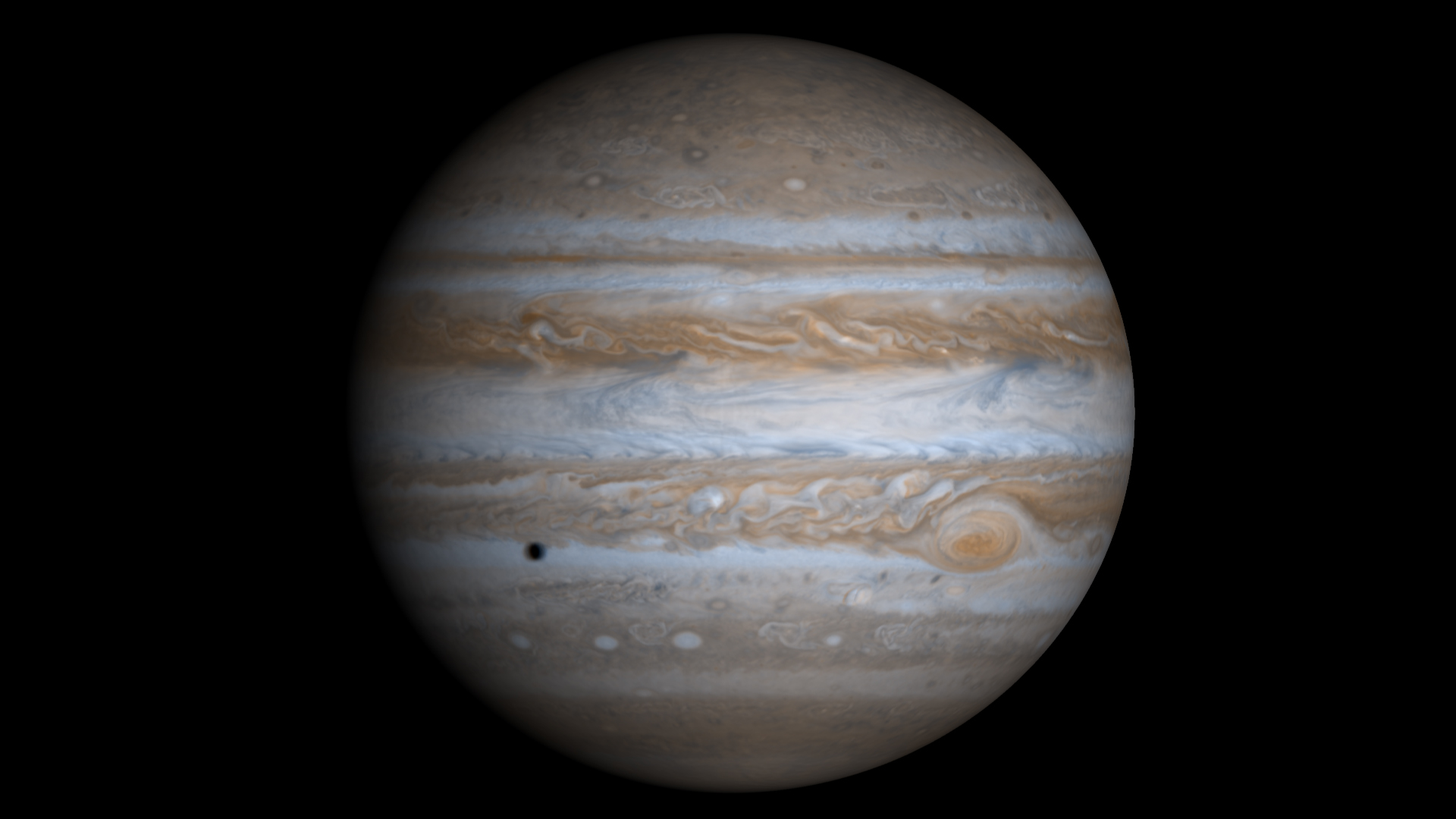
Long before it became the giant planet we see today, Jupiter was even bigger and had a much stronger magnetic field, according to a new study that looked back in time to reveal what the world was like in its early years.
The new calculations, described in a paper published Tuesday (May 20) in the journal Nature Astronomy, suggest that just 3.8 million years after the solar system's first solid objects formed, Jupiter was twice its current size and had a magnetic field at least 50 times stronger than what we see today.
"Our findings provide precise conditions that future models must match, placing strict constraints on when and how Jupiter formed," Konstantin Batygin, a professor of planetary science at the California Institute of Technology, who led the new study, told Space.com. "This brings us closer to understanding how not only Jupiter but the entire solar system took shape," he added in a statement.
To uncover Jupiter's ancient planetary conditions, Batygin and his team largely bypassed the assumptions of existing planetary formation models, such as the rate at which primordial gas was gathered by young planets. Instead, they focused on two of Jupiter's lesser-known moons, Amalthea and Thebe.
These small satellites orbit very close to Jupiter and follow slightly tilted paths that helped the scientists trace the past position of Io, Jupiter’s innermost large moon. That, in turn, helped the researchers pinpoint the inner edge of Jupiter’s ancient circumplanetary disk, which was key to determining how fast Jupiter once spun. By applying the principle of conservation of angular momentum, the team reverse-engineered Jupiter’s original size, Batygin told Space.com.
"It felt remarkable that two relatively minor moons provided such clear evidence of Jupiter’s early state," the researcher recalled. "The real excitement was achieving this result independently of complex accretion models that depend on a series of assumptions."
The team's calculations indicate that young Jupiter had a radius nearly twice its current size, with a volume large enough to hold more than 2,000 Earths. As the bloated, magnetic powerhouse radiated heat over time, it gradually cooled and contracted, shrinking in size. In the present day, Jupiter is still "king of planets," its volume can fit 1,321 Earths.
Although the study doesn't directly explore how such a massive Jupiter would have influenced the early solar system, it emphasizes that the planet's formation and early evolution played a "pivotal role" in shaping the solar system's overall architecture.
According to Batygin and his team, the new findings also capture Jupiter at a crucial point in time, when the cloud of gas and dust left over from the sun's formation evaporated. This marked the end of planet formation and locked in the basic layout of the solar system.
"What we've established here is a valuable benchmark," Batygin said in the statement. "A point from which we can more confidently reconstruct the evolution of our solar system."
Update 5/22: This article has been updated with comments from the study author.







